The ceremony aims to wish for good health and bountiful crops.
As many as three shamans and four assistants join the ceremony. Offerings include a pig, 10 chickens, sticky rice and a jar of wine.
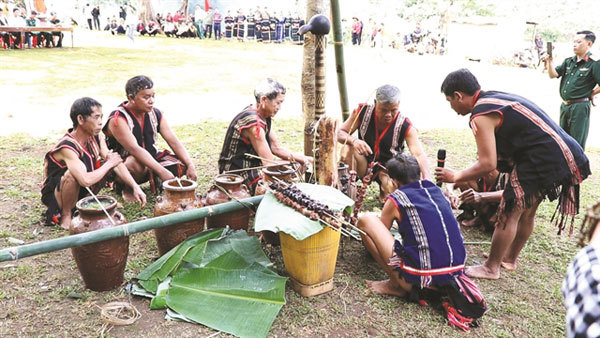 |
| Shamans and assistants at the ceremony. VNA/VNS Photos Quang Thai |
Early in the morning, locals gather at the main water source to prepare for the event.
After the pig and chicken are slaughtered, the assistants takes the liver, lung, kidney, tail and the wine to put on the worship altar. The shamans and their assistants will conduct the ceremony in a few hours.
The main shaman will start the ceremony saying: “Greatest Heaven, today we organise a worship ceremony at Krêl Village.
"We conduct it with our sincere hearts. Here are the offerings, with a big pig, 10 big chickens, a big jar of wine.
"We hope genies bless us and give us clean water source, good health, bumper harvest and other assets.
"Please protect us and help us do as good business as others in other villages.”
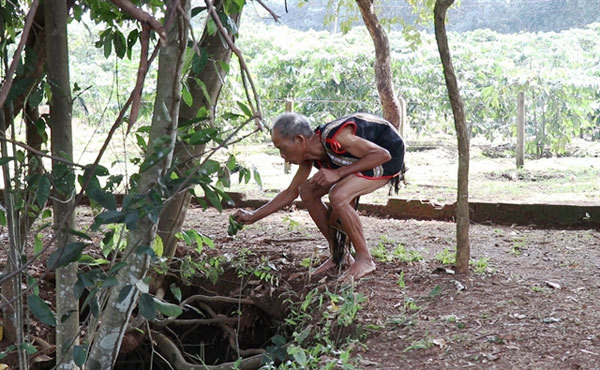 |
| An elderly shaman in practice. |
The next day, locals will conduct the same ceremony at the communal house to pay homage to genies.
Nguyen Ngoc Long, director of the theatre, said it had hosted various traditional ceremonies since 2019.
“We have chosen the most special customs of local ethnic minority groups to remake,” he said. “We remake the water source worship ceremony to develop traditional values and enhance patriotism among Jrai people, as well as their pride.”
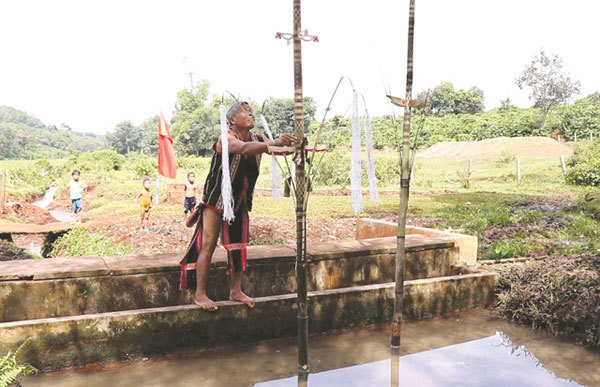 |
| The ceremony wishes for a bumper harvest and good health for everyone. |
According to Rơ Mah Che, a resident of Krêl Village, the community has maintained the ceremony every October, but on a smaller scale.
“This year, authorities help us to organise the ceremony per the original model in our customs, so we are very happy,” he said.
Long said since early this year, the theatre has hosted three such important ceremonies including worship for rain and worship for a water source to enhance local’s solidarity and preserve traditional customs.
“Ceremonies dedicated to various genies are the heritage of the Central Highlands’ ethnic minority groups,” Long said. “Though they are organised in family or community scale, they spread a message of a wealthy and happy life to each person, each home.”
Jrai people live in villages. Each village hosts 50-70 households. They keep the habit of living in houses on stilts with the main doors facing north.
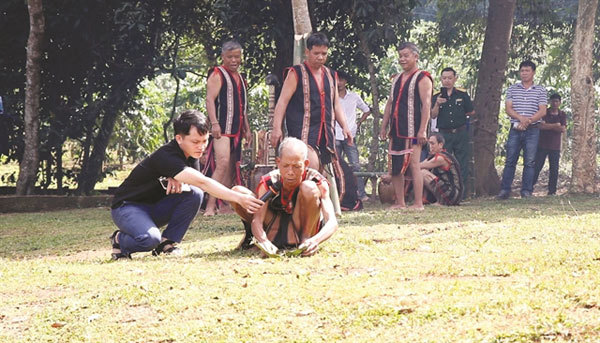 |
| Ancient procedures are kept in the ceremony. |
The male head of the village and male elders have great prestige and manage the community’s activities.
Every village has at least one communal house. Some villages have two community houses, which are called “male” and “female” one.
The communal house is not only where locals gather but also a place to welcome guests. The communal house is located in the north of the village.
Jrai people live mainly on agriculture. Their farming tools are very simple like knives and hoes. They keep poultry and cattle as well. They also raise horses, buffaloes and elephants. Buffaloes are important cattle for them as they are used as offerings at worship ceremony and to exchange for objects like gongs, jars and copper saucepans.
Jrai men are good at knitting bamboo containers while women are excellent at weaving cloths.
They also go hunting and fishing for food.
Jrai people follow matriarchy. Jrai women are free to choose their partners and be active in marriage. After the wedding, the groom lives in the wife’s house and has no property inherited from their parents. In contrast, when women get married, they can move out of their parents’ house and get some assets from parents. Children take their mother’s surname. But in society, men take a more important role than women.
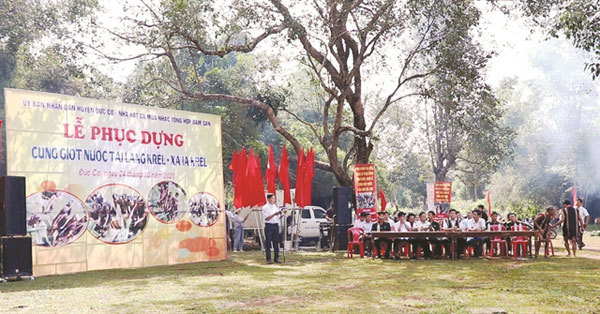 |
| The audience at the worship ceremony. VNA/VNS Photos Quang Thai |
Jrai people are known for epics and legendary stories like Đăm Di Đi Săn (Đăm Di Goes Hunting) and Xing Nhã (Life Story of Xing Nhã), and the art of gongs, drums as well as T’rưng bamboo xylophone.
Most Jrai people are good at dancing and singing from a small age. They will sing and dance till their later years. VNS
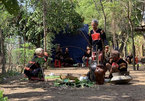
Praying for rain in a parched landscape
When the summer sun is at its fiercest and all around is cracked and dried the Jrai ethnic minority in the Central Highlands province of Gia Lai pray for rain.
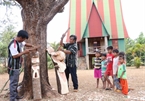
Wooden sculptures play key roles in life and death
The province's Bahnar and Jrai ethnic groups' Pơ Thi or Bỏ Mả ceremony is held one to three years after someone dies to ask for the dead's permission to let the living move the corpse to a new tomb.